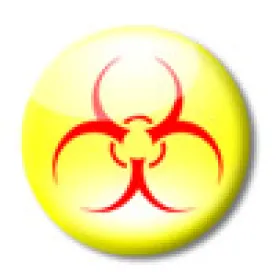On February 27, 2015, ten departments under China’s central government jointly issued a revised list of hazardous substances, the Inventory of Hazardous Chemicals (“Inventory"), which will become effective May 1, 2015. The Inventory represents the joint efforts of multiple ministries and will replace the existing Catalogue of Hazardous Chemicals (2002) and Inventory of Chinese Highly Toxic Chemicals (2002). The Inventory contains 2,828 hazardous chemicals and expands coverage from the 2002 lists through the inclusion of a large group of chemicals with a closed cup flash point not exceeding 60℃ (e.g., synthetic resin containing flammable solvents; paints; auxiliary materials; coatings, etc.).
The Inventory is intended to aid the administrative work of regulators and help clarify industries’ obligations under the 2011 State Council Decree 591 (“Decree 591”), Regulations on the Control over Safety of Hazardous Chemicals, and its sub-regulations. Decree 591 is the key law on management of hazardous chemicals and regulates chemicals at each step of the supply chain. Supplementary guidance regarding the Inventory, including official guidance on harmonized classification of the Inventory’s hazardous chemicals, is forthcoming.
Decree 591, in conjunction with the revised Inventory, is likely to be much more stringently enforced than under previous regimes for regulating hazardous chemicals. Following the January 1, 2015 amendments to China’s Environmental Protection Law (“EPL”), China has already seen a significant increase in the size and frequency of fines assessed for environmental violations. The trend toward larger penalties began with enhanced enforcement of the Clean Air Action Plan, which was implemented last year. There has been a recent focus on initiatives regarding assessment of daily noncompliance fines; detainment and incarceration of corporate management; administrative punishment of management; forced asset confiscation or facility relocation or closure; and payment of large sums for public compensation.
Indeed, in the first two months after the EPL amendments, the Ministry of Environmental Protection (“MEP”) reported that daily administrative penalties were assessed against 15 companies, totaling 7.23 million yuan ($1.15 million). Another 136 companies were forced to close or had assets confiscated, 122 companies had production suspended, and 107 companies had legal representatives detained pending investigations. This uptick in enforcement appears likely to become the “new normal,” as additional environmental action plans and amendments to existing programs continue to roll out this year. The trend toward greater oversight and enforcement of environmental protection regulations may also be encouraged by the March 15, 2015 revision of China’s Legislation Law, which expands the number of municipal governments with their own legislative powers from 40 to 284 cities.



 />i
/>i